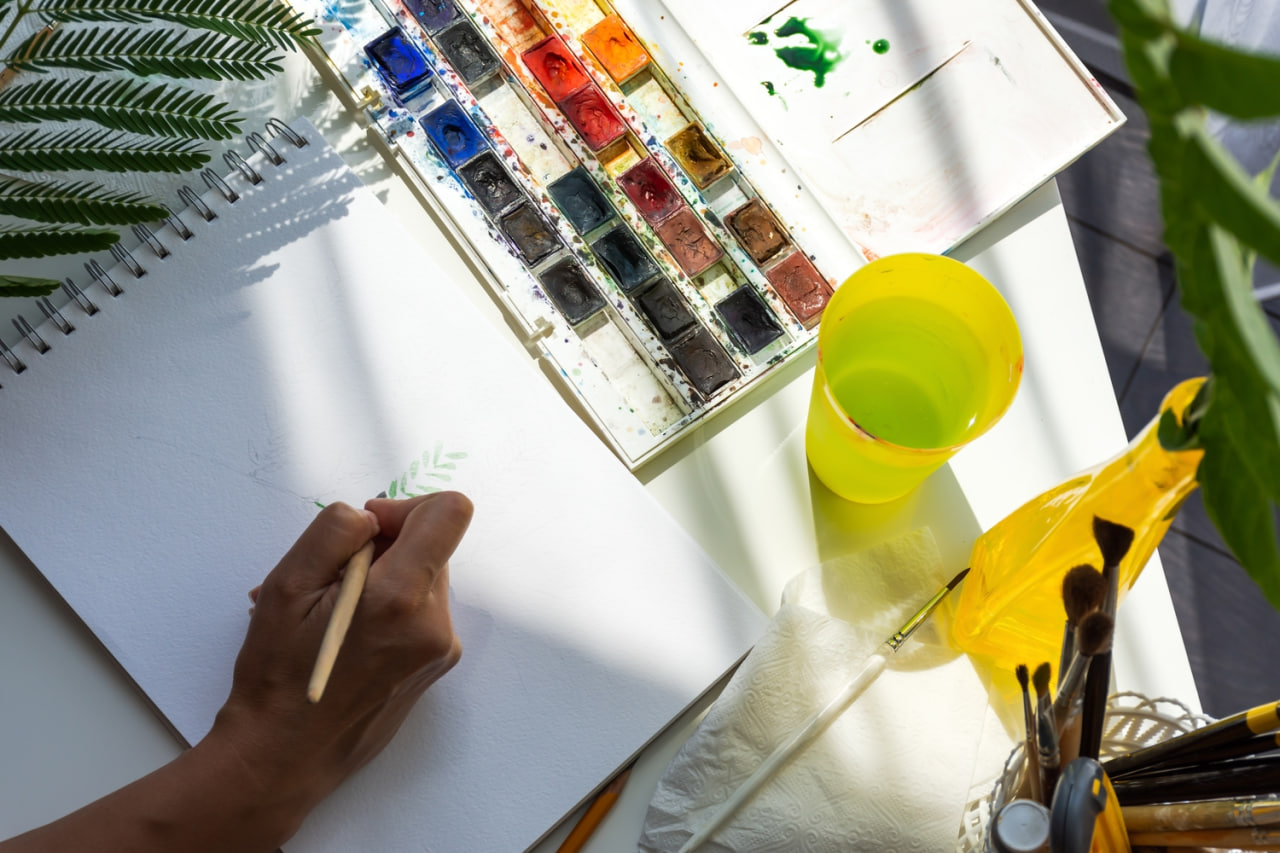Mastering Watercolor Basics: Techniques Every Beginner Should Know
Watercolor painting is a versatile and expressive medium that offers both challenges and rewards for artists at every level. Unlike other forms of painting, watercolor combines transparency, fluidity, and spontaneity, requiring a delicate balance of control and experimentation. Mastering the basics is essential for beginners to build confidence, develop skill, and create artwork that reflects both technical proficiency and personal expression.
Understanding Watercolor Materials
The foundation of successful watercolor painting starts with understanding the materials. Key components include paints, brushes, paper, and palettes. Watercolor paints come in tubes or pans, each offering different levels of pigment concentration and ease of use. Selecting quality paints ensures vibrant color and consistent application.
Brushes are equally important. Round brushes are versatile for fine lines and broad strokes, flat brushes are ideal for washes and large areas, and detail brushes allow precision work. Understanding the interaction between brush type, water, and paint helps achieve the desired effects.
Watercolor paper differs from standard paper because of its absorbency and texture. Cold-pressed paper is slightly textured and ideal for most techniques, while hot-pressed paper is smooth and suitable for detailed work. Familiarity with these materials is crucial for developing control and achieving predictable results.
Basic Techniques for Beginners
Washes and Gradients
One of the first techniques to learn is the wash, a foundational skill for creating backgrounds, skies, and large areas of color. Flat washes provide a uniform layer of color, while graded washes transition smoothly from dark to light, adding depth and dimension. Mastery of water-to-paint ratios is essential, as too much water can create unintended blooms, and too little can result in streaks or uneven coverage.
Wet-on-Wet and Wet-on-Dry
Wet-on-wet painting involves applying wet paint to a wet surface, creating soft, blended effects that are ideal for skies, water, or atmospheric backgrounds. Wet-on-dry involves painting wet paint onto a dry surface, producing sharper lines and more controlled shapes. Understanding when and how to use these techniques allows beginners to create varied textures and effects while maintaining artistic control.
Layering and Transparency
Watercolor is inherently transparent, which allows for layering multiple washes to build color intensity and depth. Beginners should practice glazing techniques, applying thin layers of color gradually rather than attempting full opacity in a single stroke. Layering enhances dimension, creates richness in color, and allows for corrections without compromising the overall composition.
Color Mixing
Mixing watercolor colors is both a technical and creative skill. Beginners should experiment with primary colors to create secondary and tertiary hues, learning how pigment concentration and water ratios influence the final result. Understanding complementary colors, contrast, and harmony ensures visually appealing compositions and prevents muddy or unbalanced mixes.
Brush Control and Stroke Techniques
Developing control over brush strokes is essential for precise and expressive watercolor painting. Beginners should practice different stroke types, including long, sweeping lines, short dabs, and delicate details. Consistency in pressure and angle helps create smooth transitions and controlled edges, while intentional variation adds texture and movement to the artwork.
Maintaining Clean Edges and Shapes
Masking techniques and careful planning can help beginners maintain crisp edges and defined shapes. Masking fluid allows areas of paper to remain untouched while painting surrounding areas. Additionally, lifting techniques, using a damp brush or paper towel, can remove unwanted pigment and create highlights or correct mistakes. These methods provide greater control over composition and enhance the clarity of final pieces.
Understanding Water and Pigment Ratios
Water management is a critical skill in watercolor painting. Too much water can cause uncontrolled bleeding and loss of detail, while too little water can create harsh lines and uneven texture. Practicing control over dilution, blending, and layering allows beginners to achieve desired effects with confidence and precision. Understanding how pigment interacts with water helps predict color intensity, transparency, and drying behavior.
Practice and Observation
Consistent practice is the key to mastery. Beginners should start with simple exercises, such as practicing washes, gradients, and color mixing, before moving on to complex compositions. Observing natural light, color relationships, and textures in everyday objects enhances the ability to translate reality into expressive watercolor artwork.
Studying professional watercolor pieces provides insight into technique, composition, and creative problem-solving. Analyzing the work of other artists encourages experimentation and informs personal artistic decisions, helping beginners accelerate skill development.
Developing Confidence and Creativity
While technical skill is important, cultivating creativity and confidence is equally vital. Beginners should embrace experimentation, accept unexpected results, and view mistakes as opportunities for learning. Watercolor’s fluid and unpredictable nature encourages improvisation, allowing artists to discover their personal style and expressiveness.

